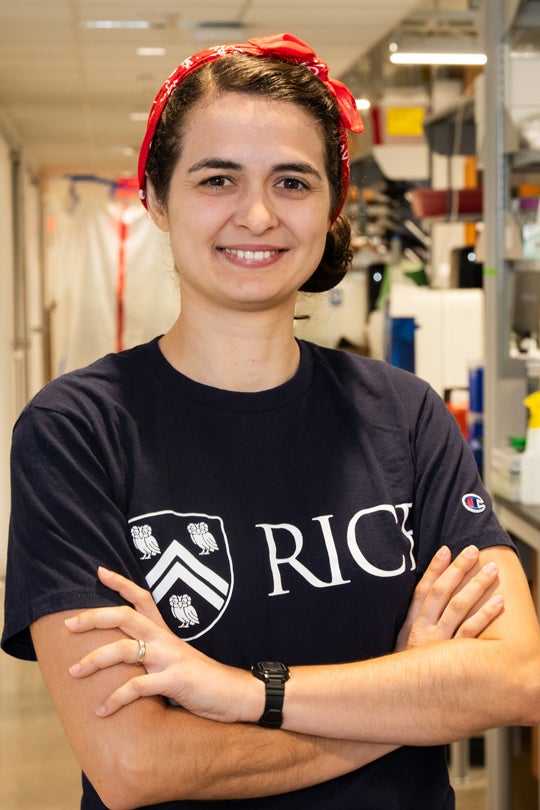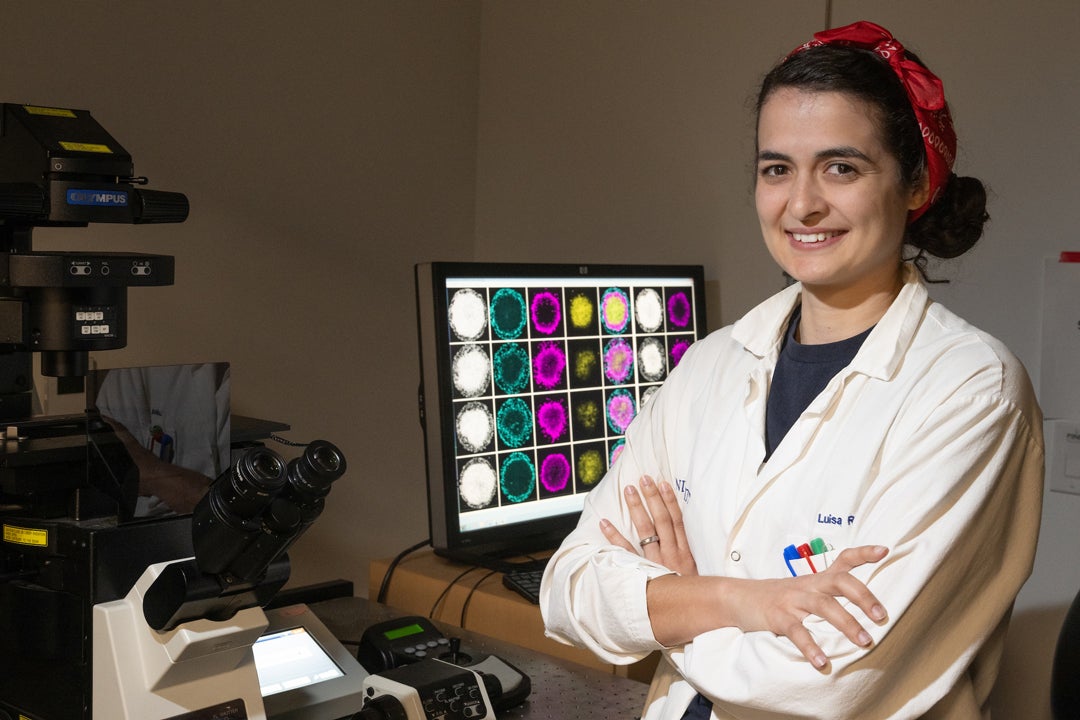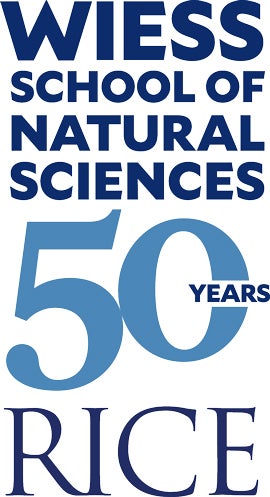
As Luisa Rezende studied membrane dynamics and subcellular structures in her master’s research, she began asking broader questions about cell-fate determination — how cells differentiate into distinct identities and form diverse tissues and organs. “I started to think not only in the context of the cellular function of just migrating and knowing where you have to go but also what you have to become,” she explained. “I found it fascinating how the cells know what they have to do, what they have to become, and where they have to go.” This realization propelled Rezende to pursue a Ph.D., seeking to bridge her background in cell biology with a more integrated, systems-level understanding of development to better understand how individual cells, starting as a single unit, orchestrate themselves into the complexity of a fully developed organism.
Now a graduate student in Aryeh Warmflash’s lab, Rezende researches one of the most fundamental puzzles of early human development: how pluripotent stem cells — cells that have the potential to develop into any cell type in the body — decide between different cell fates. “There are a handful of molecules that are important in this decision-making and this specific window of development time that we call gastrulation,” Rezende explained. Her research looks at one of these molecules, Nodal, and its role in cell-fate determination. Unlike other signaling molecules that exist in multiple forms, there is only one Nodal gene in humans, making it an ideal candidate for direct observation and genetic tagging.
Beyond its singularity, Nodal is also highly regulated. “It has inhibitors, cofactors and coligands, all of which change its dynamics and how Nodal signaling will look in the cell,” said Rezende. A key aspect of her work focuses on the two Nodal inhibitors, Lefty1 and Lefty2, which were historically thought to function interchangeably. Rezende has found that Lefty1 and Lefty2 behave quite differently, regulating Nodal signaling in distinct ways. Namely, Lefty1 can diffuse over longer distances, while Lefty2 is more localized, creating a nuanced control system that shapes early embryonic development.

To better understand these intricate signaling dynamics, Rezende utilizes cutting-edge, live-cell imaging techniques. By attaching fluorescent tags to proteins that are naturally produced within cells, Rezende is able to track molecular interactions and observe signaling dynamics in real time. This methodology is a significant improvement over those used by previous studies, which relied on transfecting cells with fluorescently tagged proteins that were artificially constructed. This led to the overexpression of proteins, or the production of proteins at levels far exceeding their normal amounts, potentially skewing results.

“For the first time, we were able to see endogenous Nodal production and track where it goes,” Rezende said of her experiments. “We discovered that Nodal itself doesn’t move far, but because it has a positive feedback loop, it spreads its signal by activating neighboring cells one at a time.”
The applications of Rezende’s research extend far beyond basic science. Understanding how stem cells commit to specific fates has direct applications in regenerative medicine. “If we want to create heart tissue for patients who have suffered a stroke, for example, the first step you need to take involves guiding pluripotent cells through the correct developmental steps,” she said, adding that her area of research plays a crucial role in the optimization of differentiation protocols, making stem cell-derived therapies more efficient and reliable.
At its core, Rezende’s research is driven by an enduring fascination with life’s most intricate processes. “It was kind of an accident that I bumped into developmental biology,” she reflected, “But once I started connecting with the literature and realizing the big questions that developmental biology asks, I fell in love.”
-Niamh Ordner ’26

